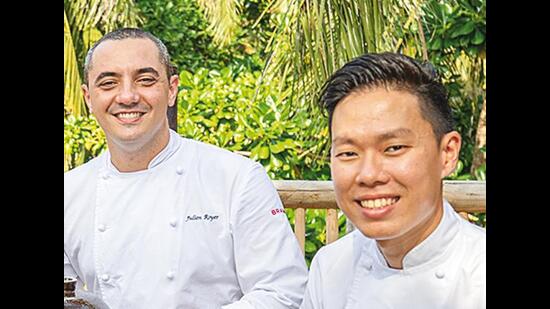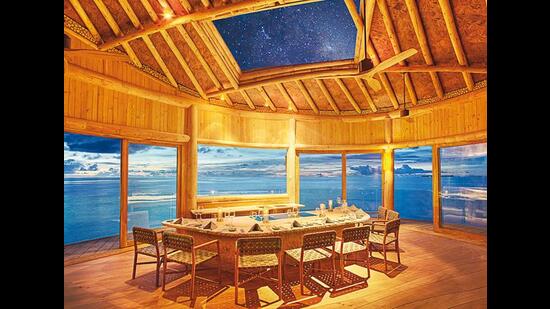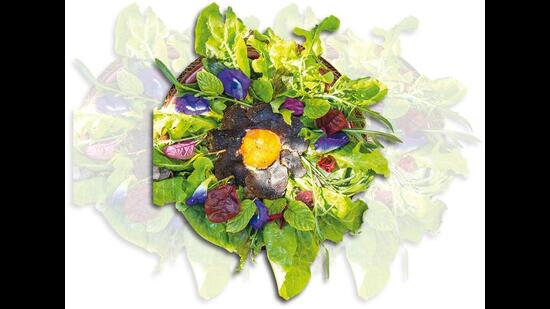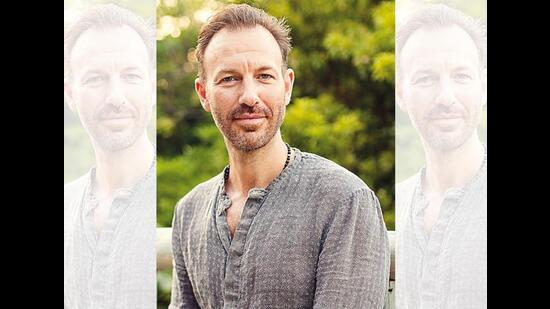Nobody disputes that the food at India’s restaurants is better than it has ever been. But equally, those of us who hunger for a taste of the global action have had a bad time over the last two years or so.
More Indians are travelling abroad than ever before—or at least they were till the pandemic struck. In 2019, around 27 million Indians went abroad. This number was expected to shoot up in 2020 (one optimistic estimate said that 40 million of us would visit foreign countries that year) till, of course, the world suddenly changed.
Many of the Indians who went abroad regarded restaurant-going as an essential part of the experience. Indian chefs will tell you how guests now keep them on their toes, comparing their food to meals they have eaten in London, Florence, New York or Hong Kong.

Unfortunately, the world is taking longer to recover from the pandemic than we had expected. Even if you can get into foreign countries now (there are still many that will either refuse to let you in or insist on a quarantine), a fear of contracting Covid has prevented many of us from travelling.
So, how do you get your foodie fix? During the pandemic, I have eaten well in two foreign destinations that welcome Indians. One of them is Dubai which has a small restaurant scene of its own though the city mostly depends on branches of restaurants from elsewhere (mainly London) and nearly every local restaurant tries to copy the Zuma menu.
The other option—though most people don’t realise this—is the Maldives.

Both Dubai and the Maldives are roughly the same distance from India (though, if you live in the South, the Maldives is much nearer). But when people think of holidays in the Maldives, they rarely focus on the food. They look at the accommodation, the lagoon, the water sports, the diving etc.
This can prove to be a serious mistake. Because you are stuck in the resort (island hopping is not a serious option in the Maldives) and you are dependent on what the resort’s chefs provide. And sometimes, the food can be really bad because the chefs know you have no choice and nowhere else to go.
The trick (if you are a foodie) is to choose a resort where the chef is very good (which is why I go to Velaa to eat Gaushan Da Silva’s food or to the Taj Exotica because of Chef Sheroy Kermani) or where there are restaurants set up by great chefs from other places (for instance, the Waldorf Astoria has a restaurant run by Dave Pynt of Singapore’s highly praised Burnt Ends). Very rarely do you find a resort that has both, an excellent culinary team of its own, and food from the world’s great chefs.

I have written about Soneva Fushi before so, I won’t bore you with details of the resort (guests have included Paul McCartney, Madonna, the Beckhams etc.) but I will tell you the main reason why I go: the food.
Soneva Fushi has a very good kitchen team of its own, staffed by chefs from all over the world and led by the quality-focussed Chef Senaka from Sri Lanka. But its other strength is that it draws on the talents of the world’s best chefs.
In foodie circles, all this is well known. Heston Blumenthal once spent nearly six months on the island. The sushi counter is manned by a chef from a three-star restaurant in Tokyo and Soneva’s Once Upon A Table, an open-kitchen-and-counter restaurant, hosts different visiting Michelin-star chefs. Dharshan Munidasa, Sri Lanka’s most famous chef, has opened a restaurant based on a grill he has designed himself. The roast meat is great and Dharshan is in and out of the Maldives while two of his chefs run the kitchen.
But Soneva still has the power to surprise. On the day that I arrived this time, I discovered that Julien Royer, one of the world’s greatest chefs, was cooking at Flying Sauces, a new restaurant on the island.

Royer, who is French, runs Odette in Singapore, which has three Michelin stars, has been judged Asia’s best restaurant and was in the top ten of the world’s best restaurants last year. (It should be in the top five this year.) Royer’s Singapore restaurant is hard to get into unless you book well in advance but here he was in the Maldives, cooking with his own hands, mingling easily with guests and explaining his dishes.
One reason why Royer is such a great chef is because he can cook at many different levels. At Odette, you get the full three-star experience, at its sister restaurant Claudine, you get a more brasserie-like experience and here, at Soneva Fushi, he had sent his sous chef ahead to suss out the local ingredients. Then, after Royer arrived, the two of them created a new menu specially for the pop-up, the highlight of which, for me, at least, was a local Maldivian tuna belly cooked with almond milk and finally given the respect it deserves.
When chefs visit the island not only do they often use local ingredients but they actually cook themselves and explain the food to guests. If you went to their own restaurants in various cities, they might not even be there and because they have huge kitchen brigades, they will rarely spend any time on the range.
On a previous visit to Fushi, I sat across a counter with Bart De Pooter, one of Belgium’s most respected chefs (two Michelin stars), as he cooked a multi-course meal using fresh ingredients like Soneva’s own mushrooms and experimented with new dishes he had thought of.

Long before Scandinavia became the centre of trendy cuisine, Soneva had already tied up with some of the region’s best chefs. (One of Soneva’s two founders is Swedish.) At Soneva Fushi’s sister property Soneva Jani, Mathias Dahlgren, the influential Swedish chef, runs a restaurant that serves his signature avocado toast and such dishes as tuna carpaccio and deep fried whole corn. It is deceptively simple food with intense flavours.
This time, Mads Refslund was cooking at Fushi. For foodies, Refslund is something of a legend. He was one of the founders of the original Noma and among the inventors of what we now call new Nordic cuisine. To have a legend like him cooking in the kitchen and coming out to meet guests is unusual anywhere—even in Copenhagen.
Refslund’s menu at Soneva used his concept of Fire and Ice in so many of the dishes that were raw or nearly raw. A salad of leaves from the garden where the restaurant is located had just a little egg (cooked) and black truffles. A whole fish was roasted in coconut husks.

Also Scandinavian-influenced is Shades of Green, a vegan restaurant (like all chefs of his ilk, Cartsen Kyster who runs it prefers the term ‘plant-based’ to vegan) which mixes global techniques. The starter is served in a golgappa puri and a deep-fried shiso leaf could well have come out of a palak patta chaat.
Vegan food is not for everyone but I reckon that Shades of Green is the restaurant that will set Soneva Fushi apart this year, winning awards and acclaim because it is so original and so much in tune with current trends.
Why do the world’s greatest chefs agree to come and cook at Soneva Fushi? I think it is because no one can refuse a vacation in the Maldives. But it is also because they rarely have a chance to cook in such relaxed surroundings, making food for just 12-14 people while being able to escape from the commercial pressures of their restaurants.
For foodies, this marks a rare opportunity to eat the food of chefs whose restaurants are always so full that we would have to book well in advance to get a table. It’s also rewarding to see the chefs create dishes before our eyes and to eat such amazing food, not in the sophisticated surroundings of Michelin-star restaurants, but out in the open, wearing our tee-shirts and shorts while we watch the waves gently lap against the sand or the palms sway to the sea breeze.
Who could resist that combination?
The views expressed by the columnist are personal
From HT Brunch, February 20, 2022



